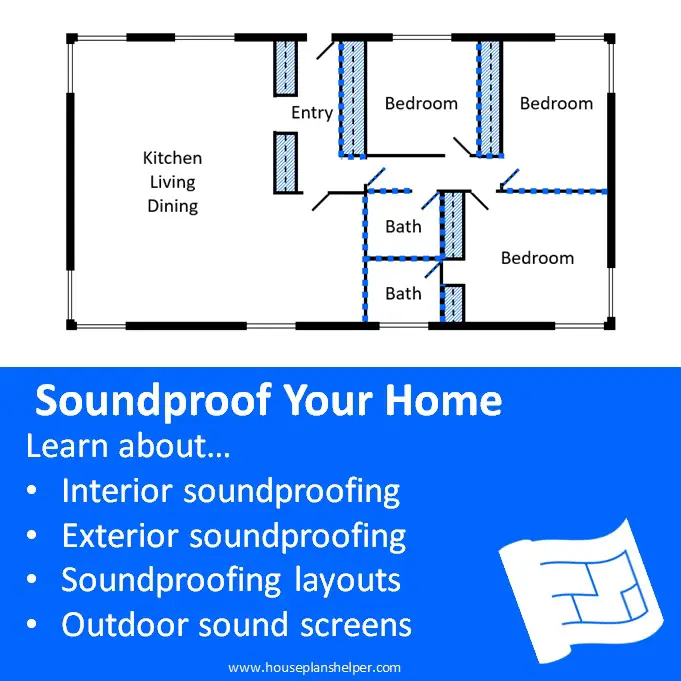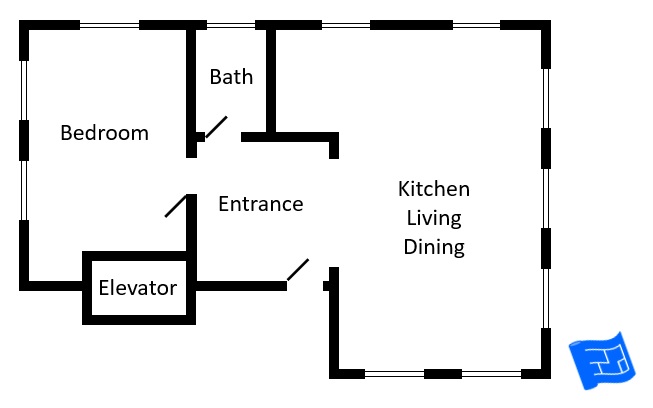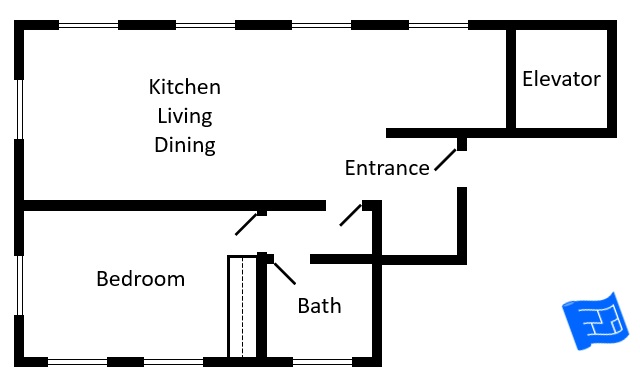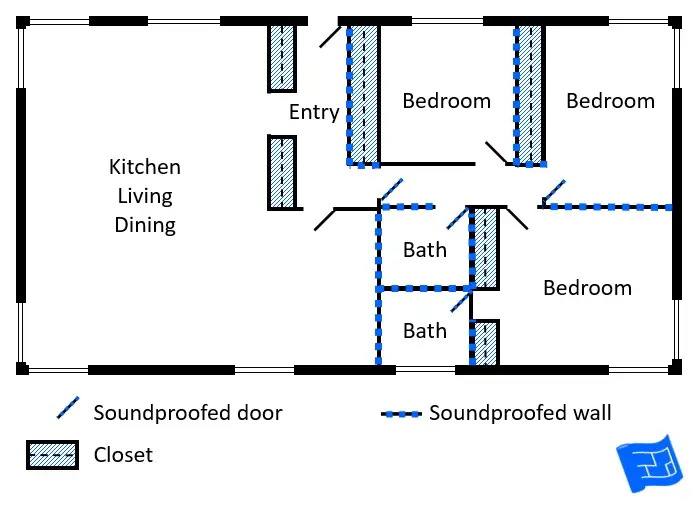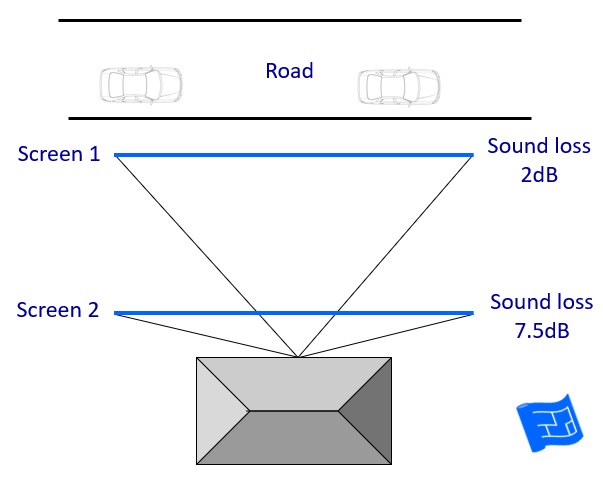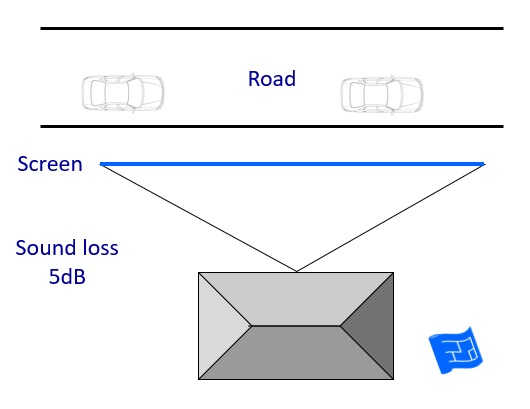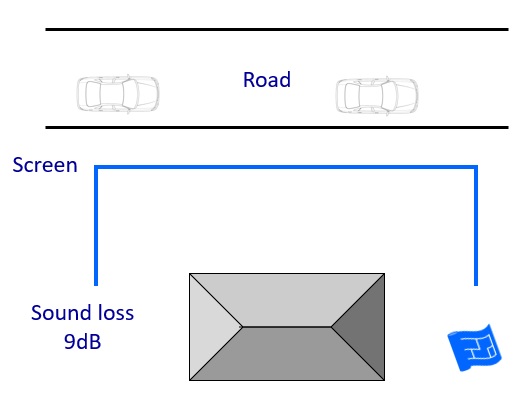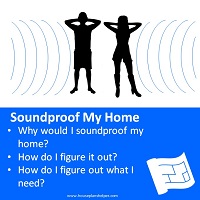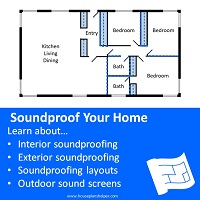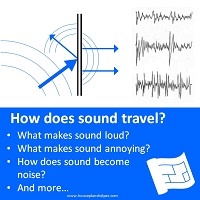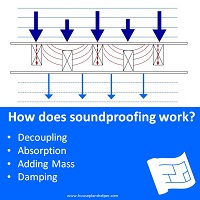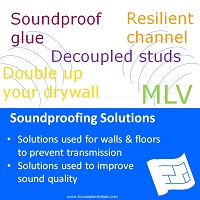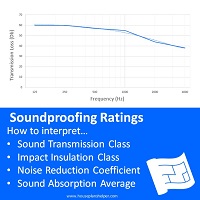- Home
- Soundproofing
- Soundproof Your Home
Soundproof Your Home
Let's have a look at how you can soundproof your home. On this page we look mainly at the ways in which you can soundproof your home simply by making good decisions about the orientation and layout of your home both inside and out.
In fact your layout is the first place you should start when figuring out your soundproofing strategy because good layout decisions are free.
In 'Should I soundproof my home?' we talked about the different sources of noise from inside and outside your home.
Let's have a look at how some layout design strategies for the interior and exterior layout of your home.
Soundproof your home with good interior layout
Here are a few things to consider about how the layout of your home contributes to your home soundproofing.
- The location of different rooms around the home is an important consideration. In general, locate quiet rooms as far away from noise sources (both interior and outdoor sources) as possible, but be careful not to compromise on the orientation of these spaces. Locate areas like garage space, hallways and your laundry utility spaces and bathrooms on the noisy side of your home.
- Try and minimize the glazing on the noisy side of your home. This should fall in to place is the advice in the first point is followed.
- Try and use storage space to create sound barriers between spaces within your home.
- Think about the vertical layout as well as the horizontal layout in order to soundproof your home.
Example of poor interior layout for soundproofing
The apartment layout below isn't ideal for soundproofing. The bedroom is right next to the bathroom and elevator with no other soundproofing in place.
Example of good interior layout for soundproofing
This is a good layout for soundproofing purposes. The closet in the bedroom prevents too much noise from the bathroom and the elevator is a good distance from the bedroom.
Here's an example which adds some soundproofing solutions into some walls and doors. Notice that not every wall and door needs to be soundproofed.
Well positioned closets that work with the room layout form a major part of the soundproofing strategy.
Good vertical layout
Here's an example of a good vertical layout to soundproof your home with the laundry placed downstairs with the bathroom immediately above.
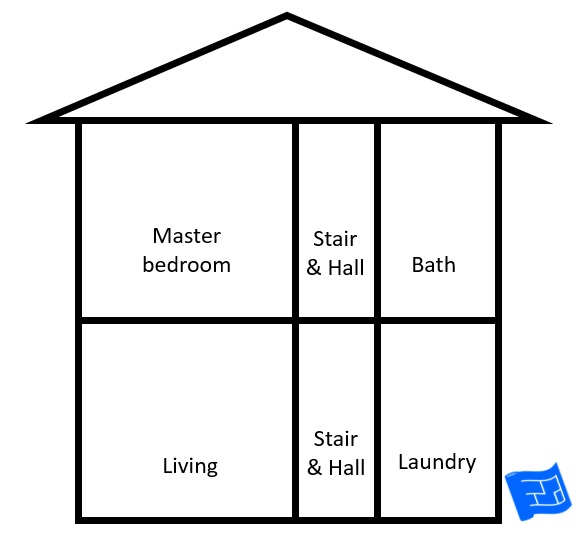 A good vertical layout for soundproofing with noisy rooms lined up - the laundry downstairs and the bathroom upstairs
A good vertical layout for soundproofing with noisy rooms lined up - the laundry downstairs and the bathroom upstairsSoundproof your home with good layout outdoors
Consider external noises when deciding how to site your new home.
Here's some strategies you can use to cope with outdoor noise and soundproof your home.
- If possible include a wall or bushy plants in your garden to absorb noise. They won't do much for blocking noise, but do offer some absorption and dissipation.
- Avoid using hard exterior surfaces such as concrete paving, which reflects sound rather than absorbing it. Softer surfaces (gravel, grass etc) are better for absorbing sound and reducing water run-off.
- Consider using sound screens.
- Consider placing a detached garage in a place where it will form a sound screen.
- Consider enclosing machinery in acoustic blocking boxes.
- Consider using sound absorbing materials on balconies or porches that are exposed to noise.
Sound Screens
Tall sound screens are appropriate to use to soundproof your home when shielding a home from a road or train track or even noisy neighbors.
Sound screens don't form any short of shell around the source of the noise so they can't reduce the noise down to zero. They can do a great job of getting down just far enough so that soundproofing solutions in the walls of your home can do the rest.
Sound screens work by reflecting and absorbing some of the sound, and increasing the distance that the rest of the sound has to travel
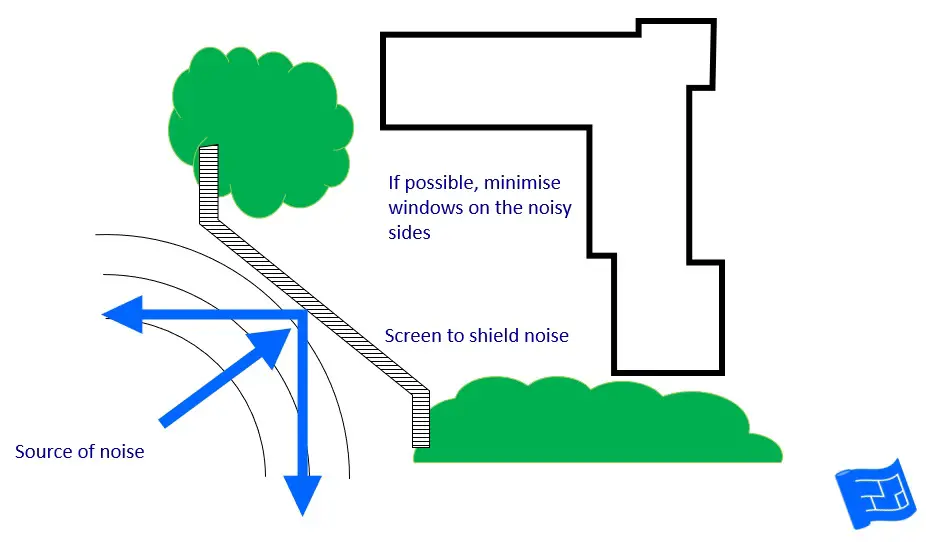
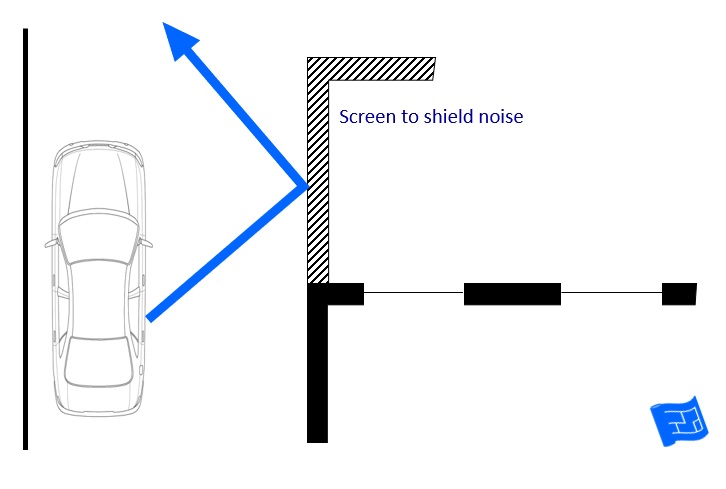
How high and how wide?
A good rule of thumb for deciding how high a sound screen is the line of sight rule which says that if you can't see the source of the noise due to the height of the screen, the screen is high enough.
As you can imagine, this means the screen can be shorter if it's placed close to the source of the noise.
Placing a sound screen closer to the source will be more effective in deflecting and absorbing the sound.
Now let's have a look at how wide a barrier needs to be.
Unfortunately, this rule of thumb about height conflicts with the fact that for a sound screen of the same width, the nearer the sound screen is to your home, the more effective is.
So how do we deal with this conflict? Give the screen some wings.
If we look at a screen that has the potential to block 10dB...
Here's the screen in a flat configuration resulting in a sound loss of 5dB.
And here it is with the wings, resulting in a sound loss of 9dB.
It's important that there are no openings (or less than 1%) in the sound screen. A sound screen with openings totaling 10% of its area will have a loss value of only 4dB no matter how high or wide it is.
Materials for sound screens
The more mass (the more solid) the screen is, the better the sound protection.
A tongue and groove fence is a good solution with solid posts and no gaps. An absorbent layer can be added. A good fencing contractor will be able to build you a fence that will do the job.
These sound screens can sometimes be unsightly so plan for some vegetation on the side that faces your home.
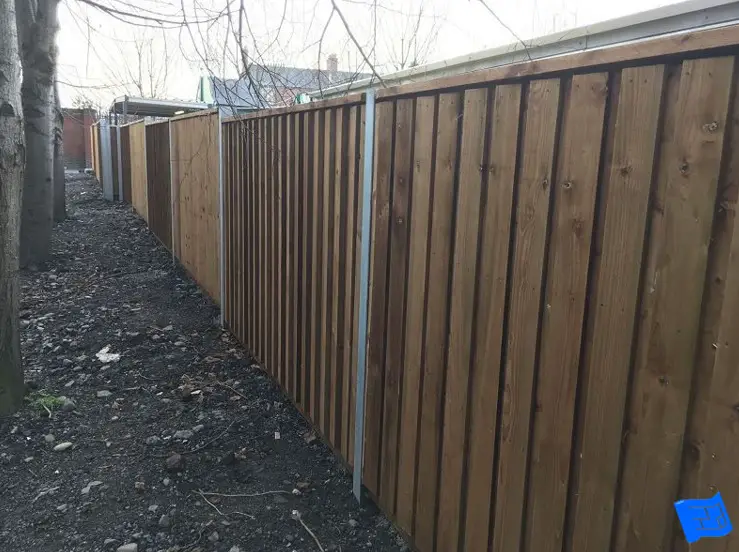
You could also look to install a specialized sound screen rather than just a fence. Some companies have sound screens specific to the type of noise.
Smaller screens
Smaller screens are useful for dampening the sound of air conditioning units or swimming pool pumps.
These can take the form of a fence or wall.
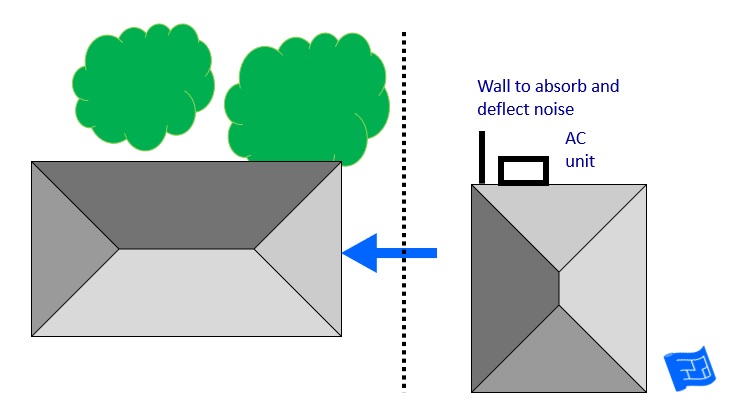
The side of the home is often a good place for your air conditioning unit from an aesthetic point of view. However, this places it nearer your neighbor's home.
There are sound proofing boxes available to dampen the noise from air conditioning units.
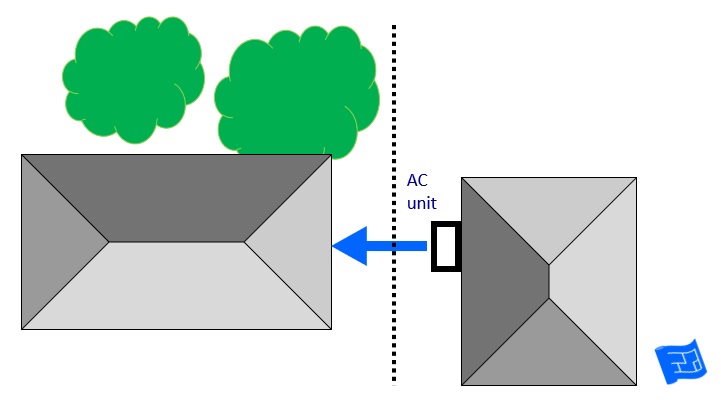
Soundproofing boxes
Another way of dealing with noise from a/c units and other outdoor pumps is to house them in a soundproof box. Try googling 'soundproof box' or 'soundproof blanket.'
Sound Absorbent Materials
There are products available that can be placed on the exterior of your home or used as an insulation that will absorb noise.
These products include:
- External cladding
- External insulation
- Windows
- Roofing systems
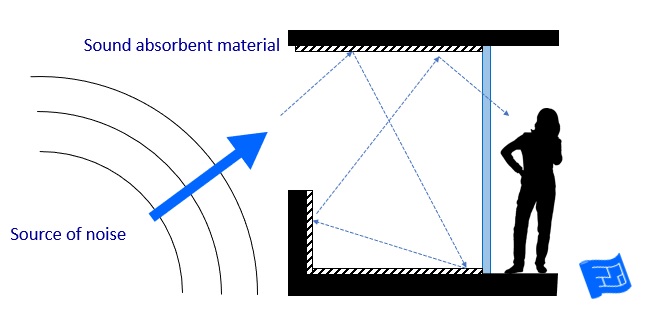
I hope this page has persuaded you to start your soundproofing strategy by thinking of your layout and not just immediately jumping in to soundproofing solutions.

